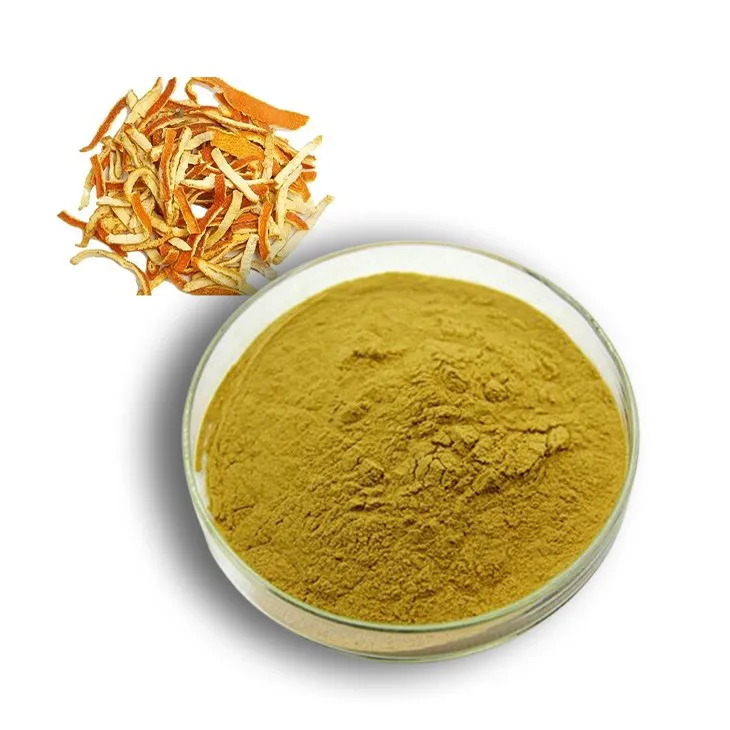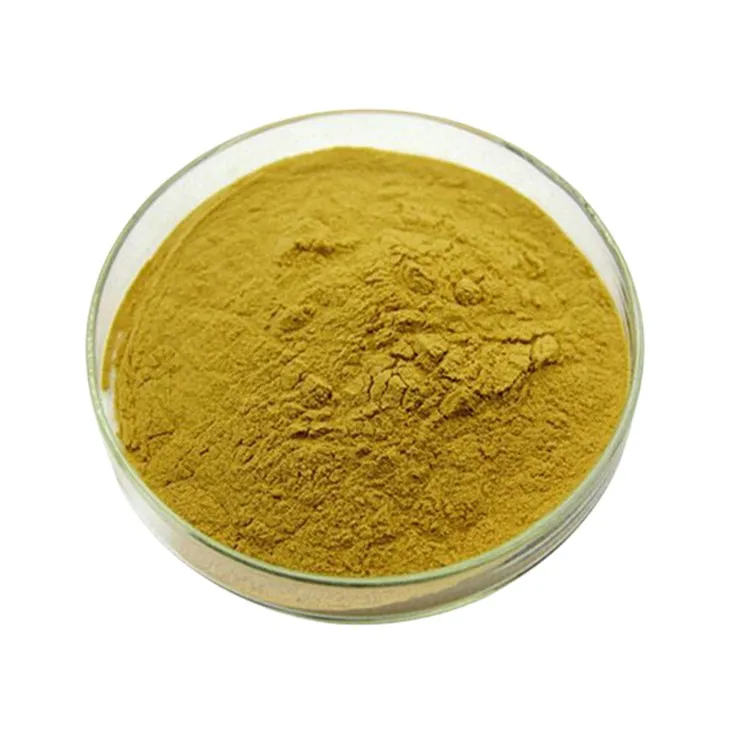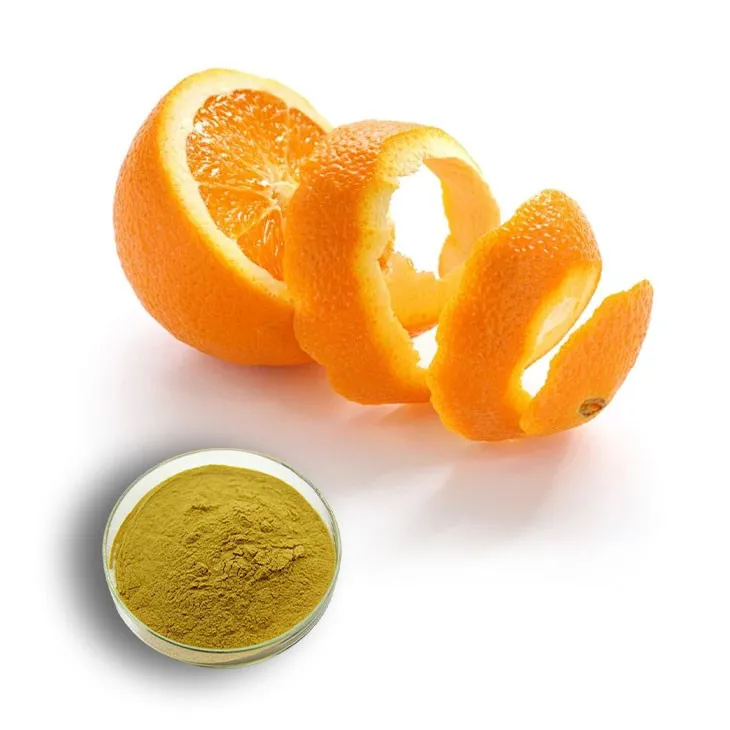- 0086-571-85302990
- sales@greenskybio.com
The process of extracting pure hesperidin from hesperidin.
2024-11-30

1. Introduction
Hesperidin, a flavanone glycoside, is abundantly present in orange peel. It has attracted significant attention in various fields such as pharmaceuticals, cosmetics, and food industries due to its numerous beneficial properties including antioxidant, anti - inflammatory, and cardiovascular protective effects. Therefore, the extraction of pure Hesperidin from orange peel has become an important research area.

2. Raw Materials Preparation
2.1 Selection of Orange Peels
The first step in the extraction of Hesperidin is the careful selection of orange peels. High - quality orange peels are crucial for obtaining a good yield of pure hesperidin. Orange peels should be fresh, free from mold, and preferably from ripe oranges. Different varieties of oranges may contain different levels of hesperidin, so choosing the appropriate variety can also impact the final extraction results.
2.2 Pretreatment of Orange Peels
Once the orange peels are selected, they need to be pretreated. This may involve washing the peels thoroughly to remove any dirt, pesticides, or other contaminants. After washing, the peels are usually dried. Drying can be done either in the sun or using a drying oven at a low temperature. Proper drying helps in preserving the hesperidin content and also makes the extraction process more efficient.

3. Extraction Process
3.1 Solvent Extraction
Solvent extraction is one of the most common methods for extracting hesperidin from orange peels. Ethanol is often the solvent of choice due to its relatively low toxicity, good solubility for hesperidin, and ease of handling. In this process, the dried and pretreated orange peels are soaked in ethanol. The ratio of orange peels to ethanol is an important factor. A typical ratio could be, for example, 1:10 (weight/volume). The mixture is then stirred continuously for a certain period of time, usually several hours. This allows the hesperidin to dissolve in the ethanol.
3.2 Microwave - Assisted Extraction
Another extraction method is microwave - assisted extraction. This method uses microwave energy to accelerate the extraction process. The orange peels are placed in a microwave - compatible container along with the solvent (such as ethanol). The microwave radiation heats the mixture rapidly, which increases the mass transfer rate and thus enhances the extraction efficiency. Compared to traditional solvent extraction, microwave - assisted extraction can significantly reduce the extraction time. However, careful control of the microwave power and extraction time is required to avoid degradation of hesperidin.
3.3 Ultrasonic - Assisted Extraction
Ultrasonic - assisted extraction is also a viable option. Ultrasonic waves are applied to the mixture of orange peels and solvent. The ultrasonic cavitation effect creates micro - bubbles in the solvent, which collapse and generate high - pressure and high - temperature micro - environments. These micro - environments enhance the extraction of hesperidin by disrupting the cell walls of the orange peels and improving the mass transfer between the hesperidin and the solvent. Ultrasonic - assisted extraction can also reduce the extraction time and improve the extraction yield.

4. Purification Steps
4.1 Filtration
After the extraction process, the resulting mixture contains hesperidin dissolved in the solvent along with other impurities such as cell debris, pigments, and other soluble compounds. Filtration is the first step in the purification process. The mixture is passed through a filter, such as a filter paper or a membrane filter, to remove the solid impurities. This helps in obtaining a relatively clear solution containing hesperidin, which is then ready for further purification steps.
4.2 Crystallization
Crystallization is an important purification technique for hesperidin. The filtered solution is concentrated either by evaporation or under reduced pressure. As the solution becomes more concentrated, hesperidin starts to crystallize out. The crystallization conditions, such as temperature, concentration, and the presence of seed crystals, play a crucial role in determining the purity and yield of the crystallized hesperidin. The crystals are then separated from the mother liquor by filtration or centrifugation.
4.3 Chromatography
Chromatography techniques are often used for further purification of hesperidin to obtain high - purity product. High - performance liquid chromatography (HPLC) is a commonly used method. In HPLC, the sample containing hesperidin is injected into a column filled with a stationary phase. A mobile phase is then pumped through the column at a constant flow rate. Hesperidin interacts differently with the stationary and mobile phases compared to other impurities, which results in its separation from the impurities as it travels through the column. Another chromatography technique that can be used is column chromatography, where the sample is passed through a column filled with an adsorbent material, and hesperidin is selectively adsorbed and then eluted to obtain a purer form.

5. Characterization of Pure Hesperidin
Once the pure hesperidin is obtained, it is important to characterize it to confirm its identity and purity. Spectroscopic techniques such as ultraviolet - visible (UV - Vis) spectroscopy, infrared (IR) spectroscopy, and nuclear magnetic resonance (NMR) spectroscopy are often used for this purpose. UV - Vis spectroscopy can be used to determine the absorption characteristics of hesperidin, which can provide information about its concentration and purity. IR spectroscopy can identify the functional groups present in hesperidin, and NMR spectroscopy can provide detailed structural information.
6. Conclusion
The extraction of pure hesperidin from orange peel involves several important steps, starting from the careful selection and pretreatment of raw materials, followed by extraction using appropriate methods such as solvent extraction, microwave - assisted extraction, or ultrasonic - assisted extraction, and then purification through filtration, crystallization, and chromatography techniques. The obtained pure hesperidin has great potential for various applications in different industries, and continuous research in this area can further improve the extraction efficiency and purity of hesperidin.
FAQ:
What are the key factors in raw material preparation for hesperidin extraction?
The key factor is to select high - quality orange peels. High - quality orange peels are more likely to contain a sufficient amount of hesperidin and fewer impurities, which is beneficial for the subsequent extraction process.
Why is ethanol often used in the solvent extraction of hesperidin?
Ethanol is a commonly used solvent because it can effectively dissolve hesperidin from orange peels. It has suitable solubility properties for hesperidin extraction, and it is also relatively safe and easy to handle compared to some other solvents.
What is the role of filtration in the purification of hesperidin?
Filtration is used to remove solid impurities. During the extraction process, there may be some insoluble substances in the mixture. Filtration can separate these impurities from the solution containing hesperidin, making the hesperidin - containing solution cleaner and more suitable for further purification steps.
How does crystallization help in obtaining pure hesperidin?
Crystallization is based on the difference in solubility of hesperidin at different temperatures. By adjusting the temperature and other conditions, hesperidin can be made to form crystals while impurities remain in the solution. This way, relatively pure hesperidin crystals can be obtained.
What are the advantages of using chromatography techniques in hesperidin purification?
Chromatography techniques can separate hesperidin from other substances with very high precision based on different chemical properties such as polarity. It can effectively remove even trace impurities that are difficult to separate by other methods, resulting in a very high - purity hesperidin product.
Related literature
- Isolation and Characterization of Hesperidin from Orange Peel: A Review"
- "Advanced Techniques for Hesperidin Extraction and Purification"
- "Hesperidin: From Orange Peel to Pure Compound - An Analytical Perspective"
- ▶ Hesperidin
- ▶ Citrus Bioflavonoids
- ▶ Plant Extract
- ▶ lycopene
- ▶ Diosmin
- ▶ Grape seed extract
- ▶ Sea buckthorn Juice Powder
- ▶ Fruit Juice Powder
- ▶ Hops Extract
- ▶ Artichoke Extract
- ▶ Mushroom extract
- ▶ Astaxanthin
- ▶ Green Tea Extract
- ▶ Curcumin
- ▶ Horse Chestnut Extract
- ▶ Other Product
- ▶ Boswellia Serrata Extract
- ▶ Resveratrol
- ▶ Marigold Extract
- ▶ Grape Leaf Extract
- ▶ New Product
- ▶ Aminolevulinic acid
- ▶ Cranberry Extract
- ▶ Red Yeast Rice
- ▶ Red Wine Extract
-
Avocado Extract Powder
2024-11-30
-
Giant Knotweed Extract
2024-11-30
-
Berberis aristata Extract
2024-11-30
-
Tinospora cordifolia extract
2024-11-30
-
Bayberry Extract
2024-11-30
-
Curcuma Longa Extract/Turmeric extract
2024-11-30
-
Hawthorn Extract
2024-11-30
-
Citrus Aurantii Extract
2024-11-30
-
Propolis Extract Powder
2024-11-30
-
Centella Asiatica Extract
2024-11-30





















